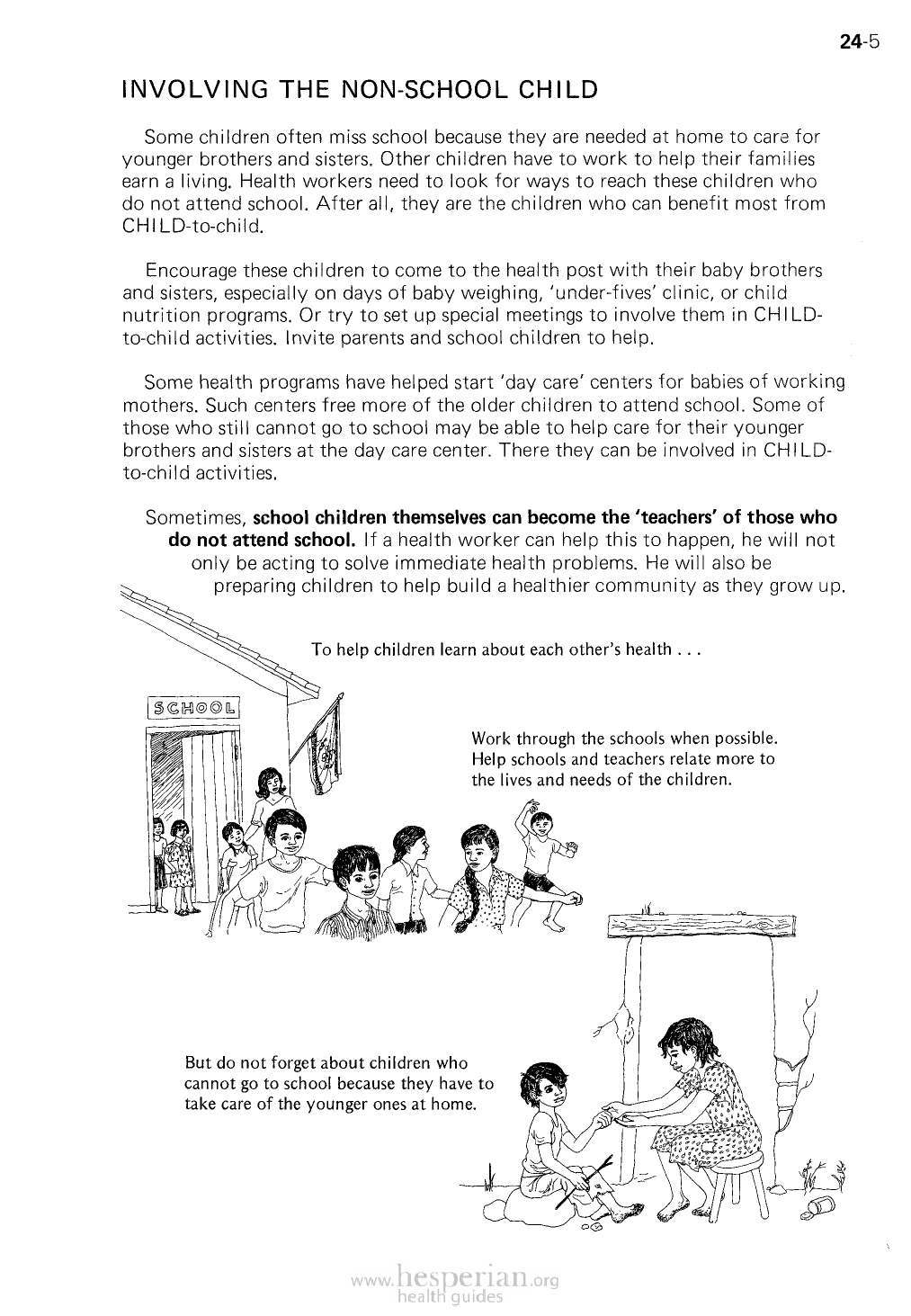
24-5
INVOLVING THE NON-SCHOOL CHILD
Some children often miss school because they are needed at home to care for
younger brothers and sisters. Other children have to work to help their families
earn a living. Health workers need to look for ways to reach these children who
do not attend school. After all, they are the children who can benefit most from
CHILD-to-child.
Encourage these children to come to the health post with their baby brothers and
sisters, especially on days of baby weighing, ‘under-fives’ clinic, or child nutrition
programs. Or try to set up special meetings to involve them in CHILD-to-child
activities. Invite parents and school children to help.
Some health programs have helped start ‘day care’ centers for babies of working
mothers. Such centers free more of the older children to attend school. Some
of those who still cannot go to school may be able to help care for their younger
brothers and sisters at the day care center. There they can be involved in CHILD-to-
child activities.
Sometimes, school children themselves can become the ‘teachers’ of those
who do not attend school. If a health worker can help this to happen, he
will not only be acting to solve immediate health problems. He will also be
preparing children to help build a healthier community as they grow up.
To help children learn about each other’s health . . .
Work through the schools when possible.
Help schools and teachers relate more to
the lives and needs of the children.
But do not forget about children who
cannot go to school because they have to
take care of the younger ones at home.